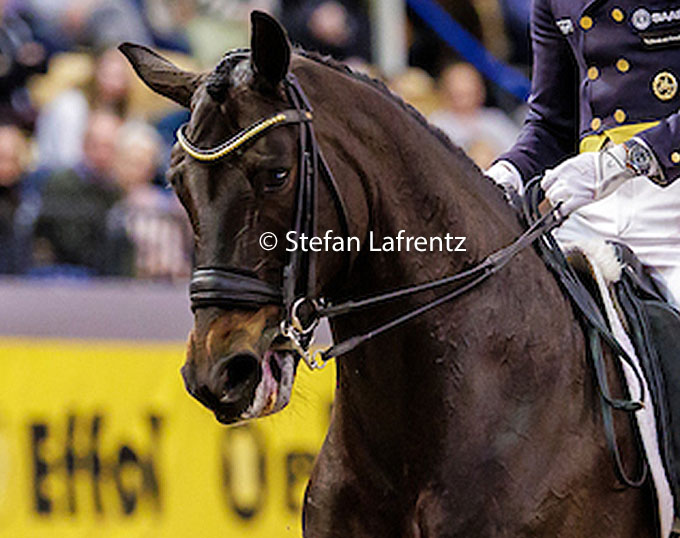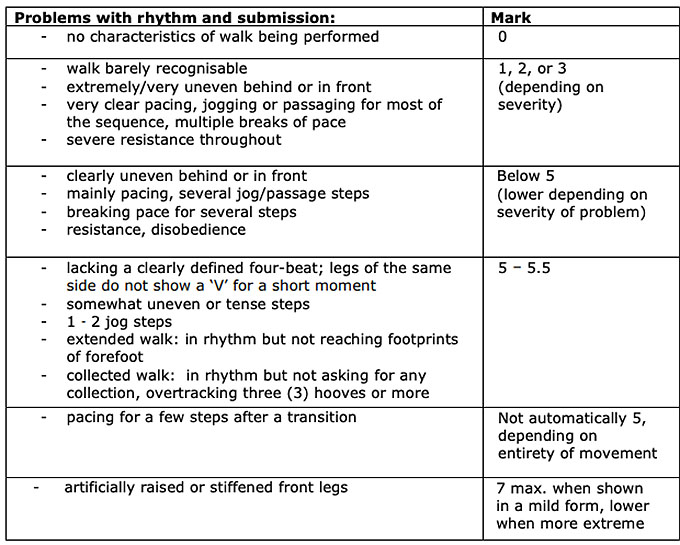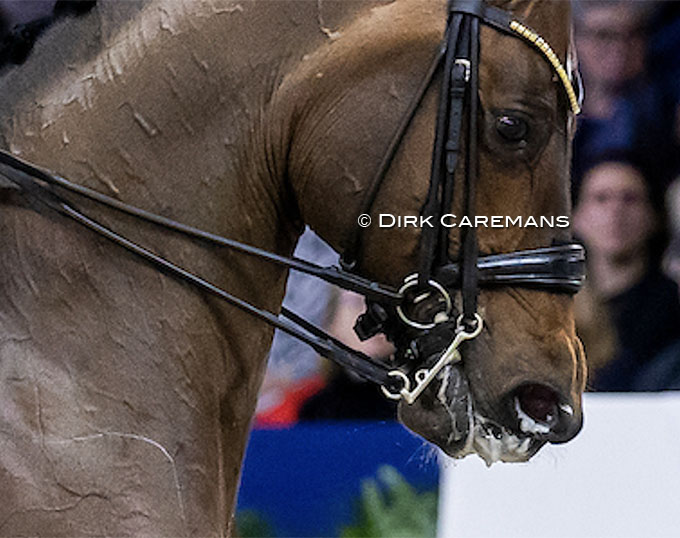
It's been a tumultuous few weeks in dressage land with the voice of animal welfare activists growing stronger as mainstream media pick up the news of malpractices in horse sport. Dressage is at the center of the attention.
Avalanche
In the last year an avalanche of abuse allegations tarnished the image of equestrian sport. Scandals in Denmark (Viegaard, Helgstrand) and North America (Cesar Parra, Evi and Tanya Strasser) tarnish dressage and make the sport spiral into a vortex of negativity, which has gone out of control on social media.
A month ago a French tv-crew went to the CDI Lier to film the warm-up and competition to source footage of riding behind the vertical and show how stewards do not intervene when alleged wrong training or abuse happen. The result was a five-minute plug into France 2's main evening news at 8 PM (watch as of 0h27). The pentathlon case (not an FEI regulated sport) as well as the show jumper with the bloody nose (FEI discipline) at the Tokyo Olympics were regurgitated as examples of the abuse that is happening in the equestrian world. (Under FEI jumping rules nothing wrong was done, although in dressage this would have led to immediate elimination. This is a good example of FEI's double standards that need correcting).
Blue Tongue Scandal 2.0
This week the Swedish magazine Aftonbladet (a Swedish daily tabloid newspaper and one of the largest daily newspapers in the Nordic countries) posted a long article with photos of horses with blue tongues, ridden by Patrik Kittel, Isabell Werth and Charlotte Fry. Photos were taken at the World Cup qualifiers in Amsterdam and Neumunster.
Several veterinarian were interviewed and quoted. Dr. Christine Levring saw the photos and commented, "the rider is too harsh on the hand. The horse has a blue tongue and clearly has what is called a painface. It looks very uncomfortable in the whole face. You can also see the worrisome wrinkle by the eye." Kittel is dealing with a second "Blue Tongue scandal" in his career, the first one happened in 2009 when photos of Scandic in rollkur and with a blue tongue were taken. The case was investigated and he was exonerated.
Aftonbladet also interviewed Prof Paul McGreevy, an Australian veterinarian, ethologist, and professor of animal behaviour and animal welfare, and asked him why judges did not intervene. He replied, "the judges are there to ensure that rules are followed, to reward ease in riding, and to ensure the welfare of the horses. Something even more important must have distracted them."
"Moments in Time"

Kittel wrote to Aftonbladet that "I understand that the pictures may raise questions. But I also know that they do not give a representative picture of the rides, which were televised and which everyone can go in and watch in their entirety on Clipmyhorse. These are some stills from a six-minute long dressage show judged by five judges, in front of thousands of spectators, and where I finished in the top positions with both horses. As in all competitions at this level, officials checked both noseband, bit and the horse's mouth immediately after the ride. There were no remarks on any of my horses after the races (sic - he means competition). I have also made several pictures available to Sportbladet from both competitions, which they are welcome to use."
Disservice
Famous riders speaking up in defence of alleged abusers or of high scoring top sport athletes that do not always present the desired picture of classical dressage are doing the sport a disservice. Isn't silence golden sometimes? The "moments in time" explanation holds no weight in their argument as similar images get produced show after show. These pictures are oil on the fire of animal welfarists, who are banding together on social media and shouting at the top of their lungs.
Isabell Werth (President of the International Dressage Riders Club) publicly defended business partner Andreas Helgstrand that she never saw horse abuse at his barn when she tried out horses there. She now questions the authenticity of the photo, suggesting the Swedish photographer changed the colour settings of her horse's picture printed in Aftonbladet. International 5* judge Elisabeth Max-Theurer (whose daughter Victoria is co-owner of Werth's Quantaz) came to the Werth's defence on social media even though judges need to adhere to the FEI Officials Code of Conduct and stay quiet in order not to create the perception of bias.

Sure these sport horses are athletes not going for a walk in the park, but there is a difference between a work face and a 'pain face'. According to the FEI General Rules (Art 142) a horse does NOT have to suffer pain for horse abuse to have occurred: " 'Abuse' means an action or omission which causes or is likely to cause pain or unnecessary discomfort to a Horse."
Since Operation X, the boldest move the FEI made so far to improve the welfare of the dressage horses - aside from "looking into the matter" - is making the use of spurs optional. The rule change was already under discussion in the summer of 2023 before Operation X was aired and fortunately there was little resistance to adopting this change. Since the start of 2024 already 36 CDI's took place across the globe and according to our research one Grand Prix rider has ridden without spurs in two shows.
Sheri Spencer: Studies Reveal Dressage Judges Reward BTV Head Carriage
Aftonbladet's article touched upon painful points in high performance dressage sport. Instead of tarring and feathering these riders in public as animal abusers, the root of the problem needs to be dealt with.

The FEI and the judges are losing grip of how correct dressage is defined and this became painfully clear when the FEI removed the “Object and General Principles of Dressage” from the FEI Dressage Rules 2024 (26th ed.) which were described in great detail (16 pages) in the 25th edition (2020). Two of those principles were "the acceptance of the bit, with submissiveness/throughness (Durchlässigkeit) without any tension or resistance" and "the head should remain in a steady position, as a rule slightly in front of the vertical, with a supple poll as the highest point of the neck, and no resistance should be offered to the Athlete.”
Spencer concludes that "while the FEI’s PR efforts have aimed to placate tensions touting equine welfare as paramount, the trending judging practices are contradictorily rewarding riding practices identified to be psychologically abusive and physically damaging to the horses, inhibiting their ability to breathe, increasing cortisol as a stress response, causing damage to the horse’s internal structures, and ultimately acting against the interests of equine welfare."
Recalibration
As the judges are the custodians of the sport it is paramount that the FEI takes charge of the matter and sets clear judging policies that proactively support and uphold animal welfare. To ensure a long-lasting future of competition sport on horseback, judging needs to be recalibrated.

This recalibration does not mean add one more collective to the bottom of the score sheet for harmony. No, lightness and harmony need to be judged in every single movement and poor bridle contact down-scored consistently. Maybe the coefficient needs to be removed from movements that celebrate technical complexity (zig zags, tempi changes, pirouettes) and put on exercises that celebrate submission and harmony (the entire walk tour, the rein back, canter-trot transition, the halts)?
In principle the wheel does not need to be re-invented. Judges need to apply to the rules/guidelines/scores they themselves defined in the FEI Judges Handbook, also for the big name riders! For instance, "A neck that is pulled together, an unsteady contact or a very busy, clearly open mouth with the tongue drawn up must be seen as fundamental mistakes. If the tongue is clearly hanging out to the side the mark cannot be higher than 5, whenever it occurs or is noticed by the Judge - maybe even lower when the tongue is in addition over the bit." They just need to apply what they wrote themselves.

Furthermore this is not only a moment for the officials to rethink their position and role as a cog in the machine. Maybe riders could draw their own conclusions: if horses require a cranked noseband, a heavy hand with the curb full on, and a tight neck for control, maybe their horses are not ready nor suitable for a (CDI) show that dayseason/year or even high performance sport in general. Maybe competition only needs to be done with horses that have the temperament and rideability for it?
Tower of Babel
As Spencer wrote, the FEI needs to "clearly detail matters related to head/neck positions, submission and their relation to equine welfare; and judging policies need to act in accordance with those parameters."

The FEI needs to put animal welfare on top of the agenda: not just for dressage, but for all disciplines because now it's creating a babylonian confusion of tongues.
-- Astrid Appels